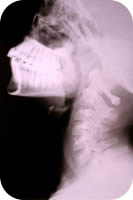8 Common Injuries Effectively Treated with Active Release Techniques
 The following is a list of some of the most common musculoskeletal injuries we treat with Active Release Techniques and exercise (Kinetic Health Calgary). Under each title there are links to pages with more information that we have written on each of these subjects. Most of these injuries can be treated effectively (90% of the time) without the need for invasive procedures.
The following is a list of some of the most common musculoskeletal injuries we treat with Active Release Techniques and exercise (Kinetic Health Calgary). Under each title there are links to pages with more information that we have written on each of these subjects. Most of these injuries can be treated effectively (90% of the time) without the need for invasive procedures.
Resolving Carpal Tunnel Syndrome With Active Release
CTS can be caused by any repetitive motion that stresses the upper extremities of the body. The increased use of computers and their accompanying flat, light-touch keyboards that allow for high- speed typing, have resulted in an epidemic of injuries to the hands, arms, shoulders, and neck. The increased use of pointing devices like the computer mouse and trackball, which require repeated subtle movements, add to these injuries. For more information click here.
 Treating Golfer’s and Tennis Elbow with Active Release
Treating Golfer’s and Tennis Elbow with Active Release
Golfer’s Elbow (Medial Epicondylitis) refers to the pain and inflammation that occurs at the inside point of the elbow (medial epicondylitis). Golfer’s Elbow can be caused by any activity (not just golf) that requires forceful and repeated bending of the wrist and fingers. For example: when the golfer swings his club, the flexor muscles and tendons of the arm tighten just before the club makes contact with the ball. For more information click here.
Shoulder Injuries – The Rotator Cuff
The shoulder joint (glenohumeral joint) is a ball-and-socket joint which joins the upper body to the arm. The shoulder joint is made up of three osseous structures, and several soft-tissue structures. For more information click here.
Resolving Sciatica with Active Release
Sciatica is a nerve compression syndrome that can be extremely painful and difficult to manage for both the patient and practitioner. Sciatic pain often affects the lower back, gluteal region, and various areas of the leg and foot. Often, the symptoms effect only on one side of the body. For more information click here.
 Iliotibial Band Syndrome (ITBS)
Iliotibial Band Syndrome (ITBS)
Iliotibial Band Syndrome (ITBS) is a common injury that affects runners and cyclists. Using conventional treatments, this condition often never completely resolves since they typically do not address all of the key structures involved in the injury. Symptomatically ITBS presents as: A sharp or burning pain on the lateral aspect of the knee. For more information click here.
Treating and Preventing Meniscus Injuries
The word meniscus is derived from the Greek word that means “Crescent” as in a crescent-shaped moon. The menisci in your knee are crescent-shaped fibro-cartilaginous structures that provides stability, shock absorption, nutrition, and joint lubrication while acting to distribute your weight across your knee joint. For more information click here.
 Plantar Fasciitis
Plantar Fasciitis
Effective resolution of Plantar Fasciitis requires a thorough understanding of the foot, how it functions, and its kinetic chain relationships to the other structures of the legs, knees, hips, and even to the core. Any successful treatment protocol must take all these elements into account, and combine treatment with an exercise routine that addresses all affected elements of the kinetic chain. For more information click here.
Resolving Whiplash Injuries with Active Release
Whiplash injuries are a very interesting, but frustrating, subject to talk about. There have been more than 10,000 research articles written about this subject. Yet, insurance companies, lawyers, and some physicians still question the validity of this syndrome. I have spent enough time in court as an expert witness to realize that opinions often have more to do with who will have to pay out money, than with the importance of addressing a condition that often leads to years of chronic pain. Pain,  which in my opinion, could have been addressed with an understanding of basic biomechanics, the right treatment methodology, and exercise. For more information click here.
which in my opinion, could have been addressed with an understanding of basic biomechanics, the right treatment methodology, and exercise. For more information click here.
If you would like more information about Active Release Techniques, please check out our international best seller “Release Your Pain – Resolving Soft Tissue Injuries with Active Release Techniques.” If you would like to more information or to purchase our books please go to www.releaseyourbody.com .
Click here to book an appointment at Kinetic Health in Calgary, Alberta.
(COPYRIGHT KINETIC HEALTH 2013 – ALL RIGHTS RESERVED)
